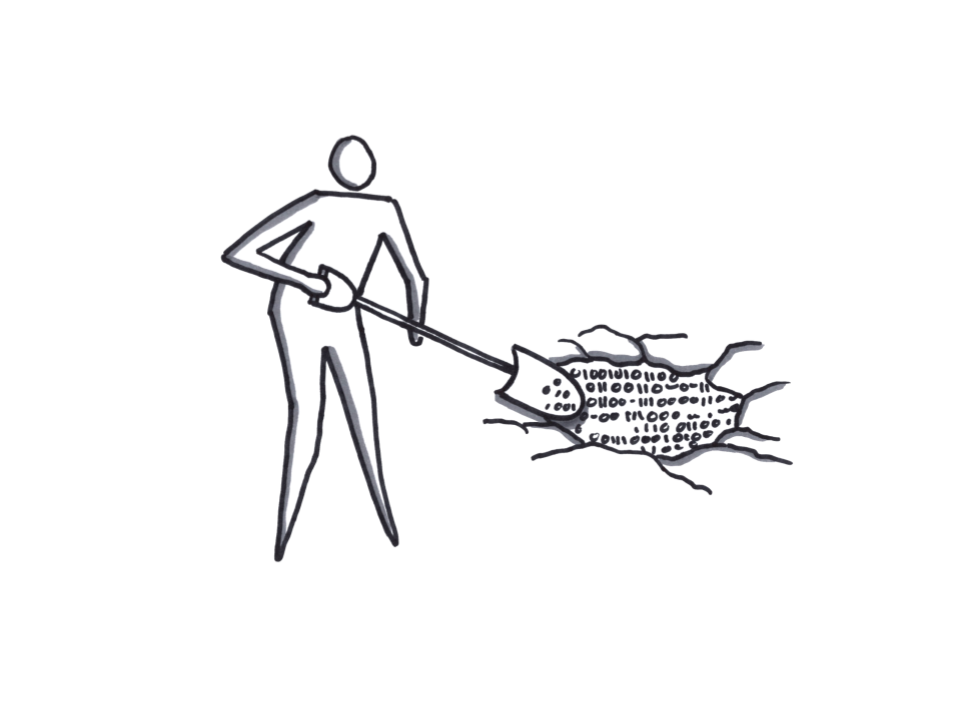Data Mining

Data Mining
In Brief
Data mining uses statistics from large amounts of data to learn about target markets and customer behaviors. This method can make use of data warehouses or big data.
Helps Answer
- Who is our customer?
- What are their preferences?
- How do they rank planned feature sets?
Tags
- B2C
- B2B
- Customer
- Quantitative
Description
Data mining can start with the results from a few questionnaires, but it is more effective to use a large dataset. Identifying the source information (where you get the data) and extracting key values (how you pick the data points) are important to getting quality results.
Data mining is best used for pattern discovery in customer perceptions and behaviors. It is useful in understanding your customers and/or your target market.
For example, you can identify the profile of potential buyers or customers by running email campaigns and gathering the results. This data can help in customer acquisition efforts.
You can also gather customer information by sending out customer satisfaction questionnaires or feedback forms. Alternatively, you can track customer behaviors or mouse clicks on your websites. By combining these two data points, you can determine customer behavioral links between reported satisfaction and actual usage. This can identify key drivers for customer loyalty and churn.
Time Commitment and Resources
Depending on the amount of data that you need to crunch and data points that you want to discover, it can take from 2-3 hours to a few weeks. You should pick one or two of the most important data points to start the learning process.
How to
You can either acquire outside (industry or market) data or distill your own (customer or product) data. Once you identify the area that you want to test:
- Acquire data (integrate from various sources, if required).
- Identify data points (determine which data or information is relevant to the research).
- Transform and extract data (there are many tools to choose from, from business intelligence tools to database software with built-in reporting tools).
- Recognize and search for patterns.
- Draw conclusions or refine the process by going back to Step 2 (or even Step 1 if you need to get better data).
Interpreting Results
Data matters, but perspective matters more. Human beings tend to see what we want to see and draw conclusions based on our own biases.
To counter these biases, you can:\ 1. Get outside help or another pair of eyes to interpret the data.\ 2. Get two data points that are counter to each other. (In research methodology, that is called the control group and experimental group.)
Potential Biases
- Confirmation bias: The interviewer can be prompted to sell their vision in case the interviewee's vision differs drastically. The interviewee feels compelled out of sympathy to adjust answers to the interviewer’s expectations.
- False positives/negatives: Small sample sizes can give disproportionate weight to results that mistakenly show the opposite of their true nature
- Ignorance of black swans: Not accounting for rare and unprecedented events that can dramatically change or determine the future outcome
Field Tips
- Got a tip? Add a tweetable quote by emailing us: [email protected]
Case Studies
- Data mining answers questions for startup businesses in Northwest Colorado
- Jaeger uses data mining to reduce losses from crime and waste
- MobileMiner: A real world case study of data mining in mobile communication
- Study: Exposure to TV Tweets drives consumers to take action - both on and off of Twitter
- The parable of the beer and diapers
- Got a case study? Add a link by emailing us: [email protected]
Tools
- Predictive Analytics Today: Top 25 Data Mining Software
- Got a tool to recommend? Add a link by emailing us: [email protected]
References
- Data mining knowledge discovery
- Everything You Wanted to Know about Data Mining but Were Afraid to Ask - The Atlantic
- Large-scale Item Categorization for e-Commerce
- SPSS. (2005). Data mining tips
- Got a reference? Add a link by emailing us: [email protected]
